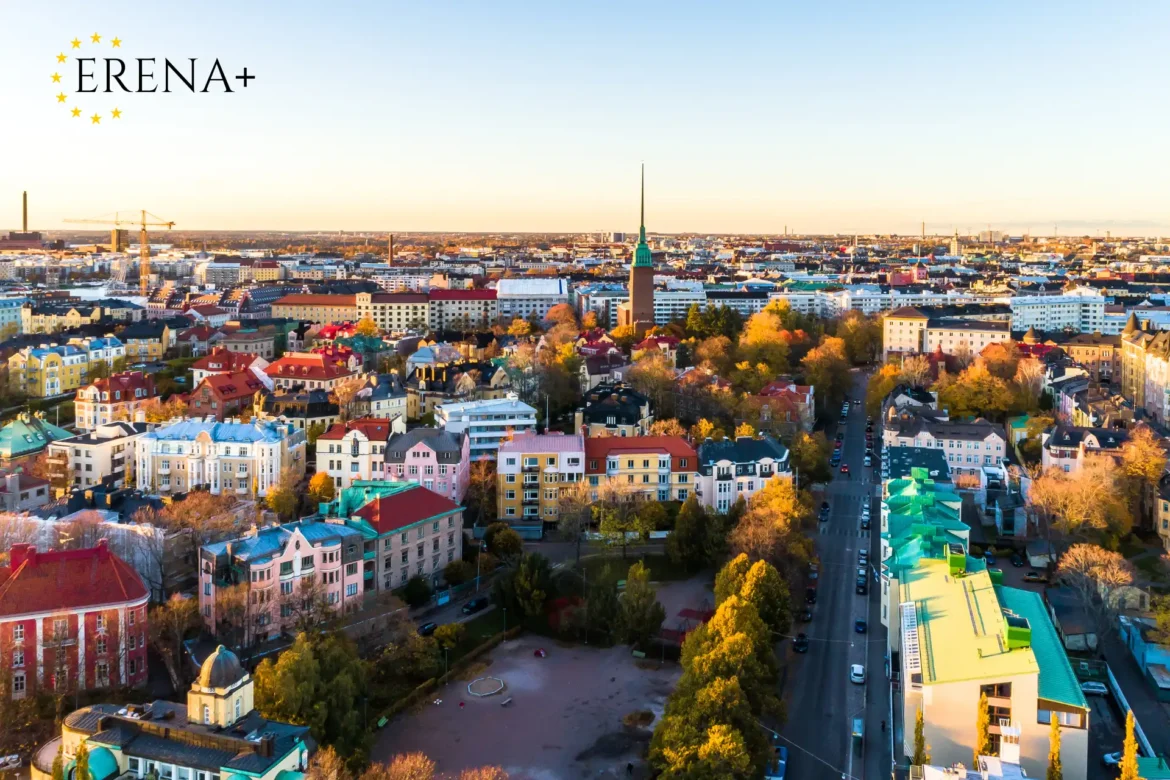After Russia’s full-scale invasion of Ukraine in February 2022, relations between Finland and Russia deteriorated significantly. Finland, with a long shared border of approximately 1,300 km, had to adapt to a new geopolitical reality, which profoundly impacted its border regions. The conflict has brought changes in security, the economy, humanitarian issues, environmental cooperation, and social life.
- Security and Defense
Previously neutral in military matters, Finland decided to join NATO, a move driven by security concerns stemming from Russia’s actions in Ukraine. This shift had a significant impact on the border regions.
- Border reinforcement: Construction of protective barriers, including fences and surveillance systems, began along the Finnish-Russian border to prevent illegal crossings.
- Increased military presence: Border areas saw a rise in military activity, with more installations and regular joint exercises with NATO partners.
- Surveillance and monitoring: Finland enhanced intelligence operations to address potential threats.
- Economic Impact
Before the conflict, Finland’s border regions maintained active trade, tourism, and transport connections with Russia. However, sanctions and countermeasures have largely disrupted these relationships.
- Decline in tourism: Russian tourists were a significant source of income for border towns like Imatra and Lappeenranta. With the border closed, tourism revenue plummeted.
- Trade breakdown: Finnish businesses reliant on the Russian market lost partners and revenue streams. Exports of goods such as timber and food products nearly ceased.
- Logistics challenges: Cross-border freight transport declined sharply, affecting the logistics sector.
- Humanitarian Changes
Demographic shifts in border regions became evident with the increasing flow of migrants from Russia, including individuals seeking to avoid conscription.
- Rise in migration: Applications for asylum from Russian citizens have surged, with many crossing through official checkpoints.
- Integration programs: Finland expanded initiatives to support migrants, including language training, housing assistance, and employment services.
- Social challenges: The arrival of new migrants created some local concerns, requiring efforts to maintain community harmony.
- Environmental Issues
Before the conflict, Finland and Russia cooperated on environmental protection, including monitoring water resources and combating air pollution. This cooperation has now ceased, creating new challenges.
- Shared resources at risk: The lack of coordination poses risks to ecosystems in border areas, especially in shared water bodies.
- Increased Finnish responsibility: Finland has had to take on tasks previously addressed jointly, requiring additional resources and effort.
- Socio-Cultural Changes
The Finnish-Russian border regions historically shared strong cultural and familial ties. Recent events have disrupted these connections.
- Cessation of exchanges: Cultural and educational programs between the two countries have been suspended, complicating cross-border relationships.
- Shifts in public sentiment: Anti-Russian sentiment has grown in Finland, influencing perceptions of Russian nationals living in the country.
- Looking Ahead
The new geopolitical landscape has created challenges and priorities for Finland, with border regions becoming focal points for investment in security, infrastructure, and social development.
- Infrastructure investment: Finland continues to fortify its border and modernize transport and military facilities.
- Economic diversification: Finnish authorities are working to support businesses and develop new markets in light of severed ties with Russia.
- Cooperation with the EU and NATO: Strengthening ties with allies helps mitigate lost partnerships and bolsters Finland’s regional position.
In conclusion, the conflict in Ukraine has catalyzed significant changes for Finland’s border regions. Security, migration, environmental, and economic issues require coordinated efforts and long-term solutions. Finland remains committed to adapting to these challenges while ensuring regional stability and strengthening its role in the broader European context.

